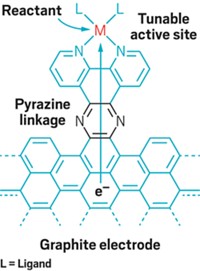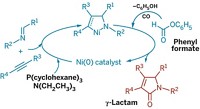Advertisement
Grab your lab coat. Let's get started
Welcome!
Welcome!
Create an account below to get 6 C&EN articles per month, receive newsletters and more - all free.
It seems this is your first time logging in online. Please enter the following information to continue.
As an ACS member you automatically get access to this site. All we need is few more details to create your reading experience.
Not you? Sign in with a different account.
Not you? Sign in with a different account.
ERROR 1
ERROR 1
ERROR 2
ERROR 2
ERROR 2
ERROR 2
ERROR 2
Password and Confirm password must match.
If you have an ACS member number, please enter it here so we can link this account to your membership. (optional)
ERROR 2
ACS values your privacy. By submitting your information, you are gaining access to C&EN and subscribing to our weekly newsletter. We use the information you provide to make your reading experience better, and we will never sell your data to third party members.
Synthesis
Linear Alkanes Polymerize On Gold
Molecular-scale surface channels confine long molecules and facilitate C–C coupling reactions
by Mitch Jacoby
October 17, 2011
| A version of this story appeared in
Volume 89, Issue 42
Long-chain alkanes can polymerize predictably at moderate temperatures on a corrugated gold surface, according to researchers in Germany who made the discovery (Science, DOI: 10.1126/science.1211836). The work adds to the growing list of catalytic transformations mediated by gold and could lead to less expensive polymers by avoiding functionalized starting materials such as alkenes. The study also highlights the mechanistic role of molecular-scale surface structure in reactions involving solid catalysts. The University of Münster’s Dingyong Zhong, Harald Fuchs, Lifeng Chi, and coworkers report that 1.22-nm-wide grooves that form on a gold surface as a result of a process known as surface reconstruction limit the diffusion of long alkanes such as n-dotriacontane, CH3(CH2)30CH3, to the one-dimensional channels. On the basis of scanning tunneling microscopy and other types of analysis, the group concludes that the surface confinement activates the molecule’s C–H bonds at selective sites—specifically at the terminal CH3 and penultimate CH2 groups. This process leads to loss of hydrogen followed by C–C coupling reactions that join the monomers end to end, the researchers say.




Join the conversation
Contact the reporter
Submit a Letter to the Editor for publication
Engage with us on Twitter